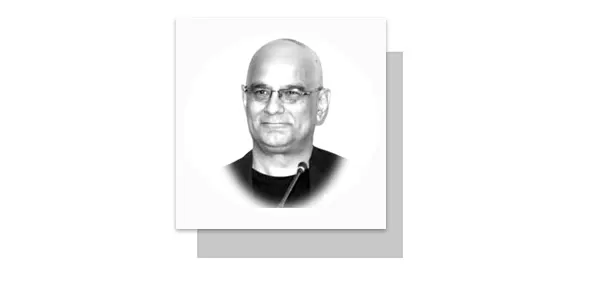IN a recent visit to Washington, this scribe had the opportunity to meet officials of the US government and think tanks. These individuals are tasked with studying Pakistan, proposing policy and charting engagements between the two countries. At the onset, their question was, “What is happening in Pakistan? Where is it headed?” Although many in Pakistan are constantly propounding doom and gloom scenarios, this scribe is an optimist on Pakistan – albeit, not for the short term, but in the long term.
My response was that Pakistan has seen worse before, it has overcome much in the past and it will emerge from the current political situation, perhaps bruised, but stronger. As the saying goes, “What don’t kill you, makes you stronger”! Yes, it is worrisome that like many countries, Pakistanis are also succumbing to cheap populism and bucking the Establishment. The world and Pakistan seem to be going through a political upheaval, but unlike the rest of the countries, I contend that Pakistan is more capable of weathering this storm, since “upheaval” is our middle name.
Arguably, there is a leadership vacuum in Pakistan which is compounding the current upheaval – PPP has been ruling Sindh ineffectively for two decades, PML-N has had the Centre and Punjab for decades and people are tired of their nepotistic politics and PTI has ruled the KP for over a decade and has floundered its resources to one end, free IK and create mayhem. Pakistanis seem to be slowly becoming aware of this political vacuum and new players are emerging. One such player is the Awaam Pakistan Party headed by Shahid Khaqan Abbasi (former PM) and Miftah Ismael (former Finance Minister). Admittedly, it will take time for AP to gets its footing, but AP is the result of the realization that the current troika will not deliver. (Interestingly, in the meetings in the US, all who heard the name of SKA and MI knew them and spoke highly of them). So, at least Pakistan is progressive and is creating options, no matter how far-fetched they might seem to some. Compared to Pakistan, I asked what the US is doing about its archaic two-party system which seems to elevate one questionable leader after another. I don’t see an awakening to this end in the US and hence, I said, I worry more about the US and where it might take itself and the world.
Having discussed their query, I bemusedly stated “when it comes to Pakistan, you should know more than me since you should be getting your reports from within Pakistan”. After all, you have the full might of the US resources to send you cables and information. They didn’t seem impressed with what they have been receiving. Knowing that I had been part of the US diplomatic regime in a past life, they asked what was lacking in the information gathering in Pakistan. My experience, I retorted, is that the US mission has continually failed to understand Pakistan. Not only just Pakistan, but US missions have miscalculated notable events all over the world; the fall of the Shah of Iran, fiascos in Iraq and Afghanistan, and the recent revolution in Bangladesh, to name a few. In Pakistan’s case, I noted that the US mission relies heavily on local staff for their information, many of whom have little understanding of the interior Pakistan, outside of some urban centres.
Don’t take my word for it I said, but over a decade ago, a study was done on the mission by senior diplomats of US government and this was one of their findings as well. In addition to this, US mission relies heavily on the same circle of “friends” who are their A-guest list. Many of these people tell the mission what the mission wants to hear, and typically don’t understand or know the realities on the ground. Admittedly, there are a few neutral and knowledgeable brokers of information, but the overwhelming majority is not so. Finally, the US diplomats in Pakistan cannot travel freely for security reasons and hence have no first-hand knowledge of Pakistan. So between local staff that is unknowing about the middle Pakistan, diplomats who are confined to the embassy and list of guests who are simply the elite of Pakistan, I am not sure how the mission will get any reliable information.
For the mission to get reliable information, we discussed that the embassy needs to think creatively. I suggested that one means to obtain input from all over Pakistan is to set up strong relationships with the US alumni. These alumni come from every geographical location and from all segments of the society and social structure. According to The Global Social Network, since 2015, 63000 thousand Pakistanis have gone to study in the US. That is an average of 7800/year. If I was to make some guestimates and assume a low average of 4000 students per year since 1990, then in the last three decades, some 120,000 students would have gone to the US. Further assuming that only a small percentage, say 40% returned, we can predict that there are 48,000 students who came back to Pakistan. And I wager that they are in every district in Pakistan and in very line of occupation and segment of society. They are perhaps the best placed to offer objective advice to the mission. US mission just needs to think out of the box and rethink their strategy on whom to listen to since it has failed them over and over again, not just here, but all over the world. And Pakistan and USA need to reset their relationship for the larger good of both. My parting comment was, you can worry about Pakistan, but I worry more about the US.
—The writer is a former Senior Advisor to the Government and a sector development specialist. He is on the Governing Council of Non-Resident Pakistanis (NRPs) in USA and Pakistan’s Buddhist Heritage Promotion Ambassador for GTPL, a company under SIFC.









